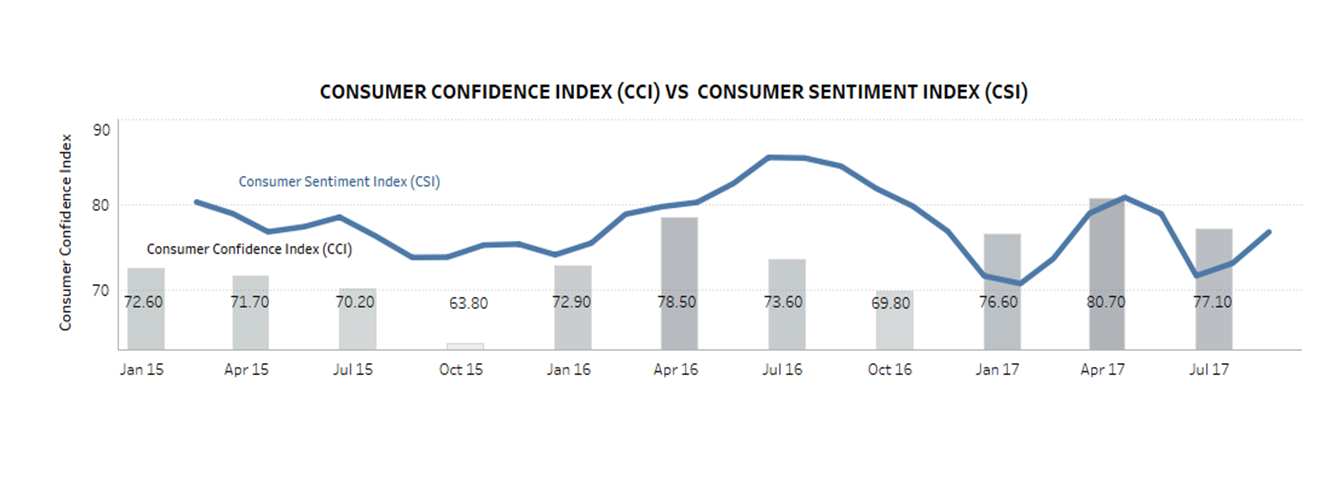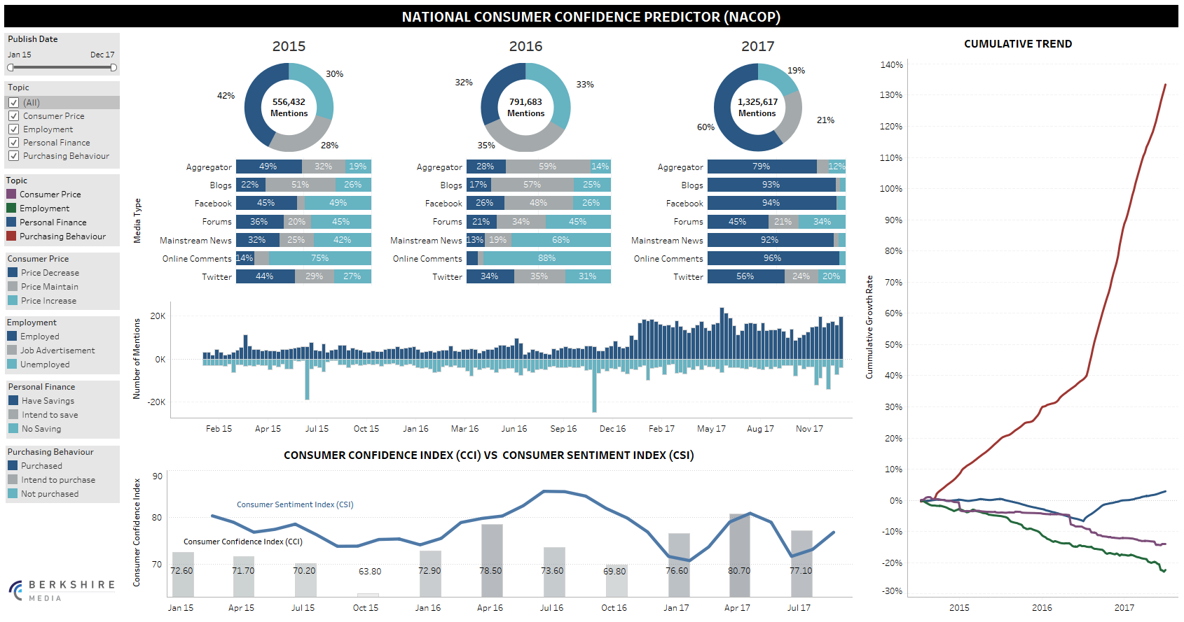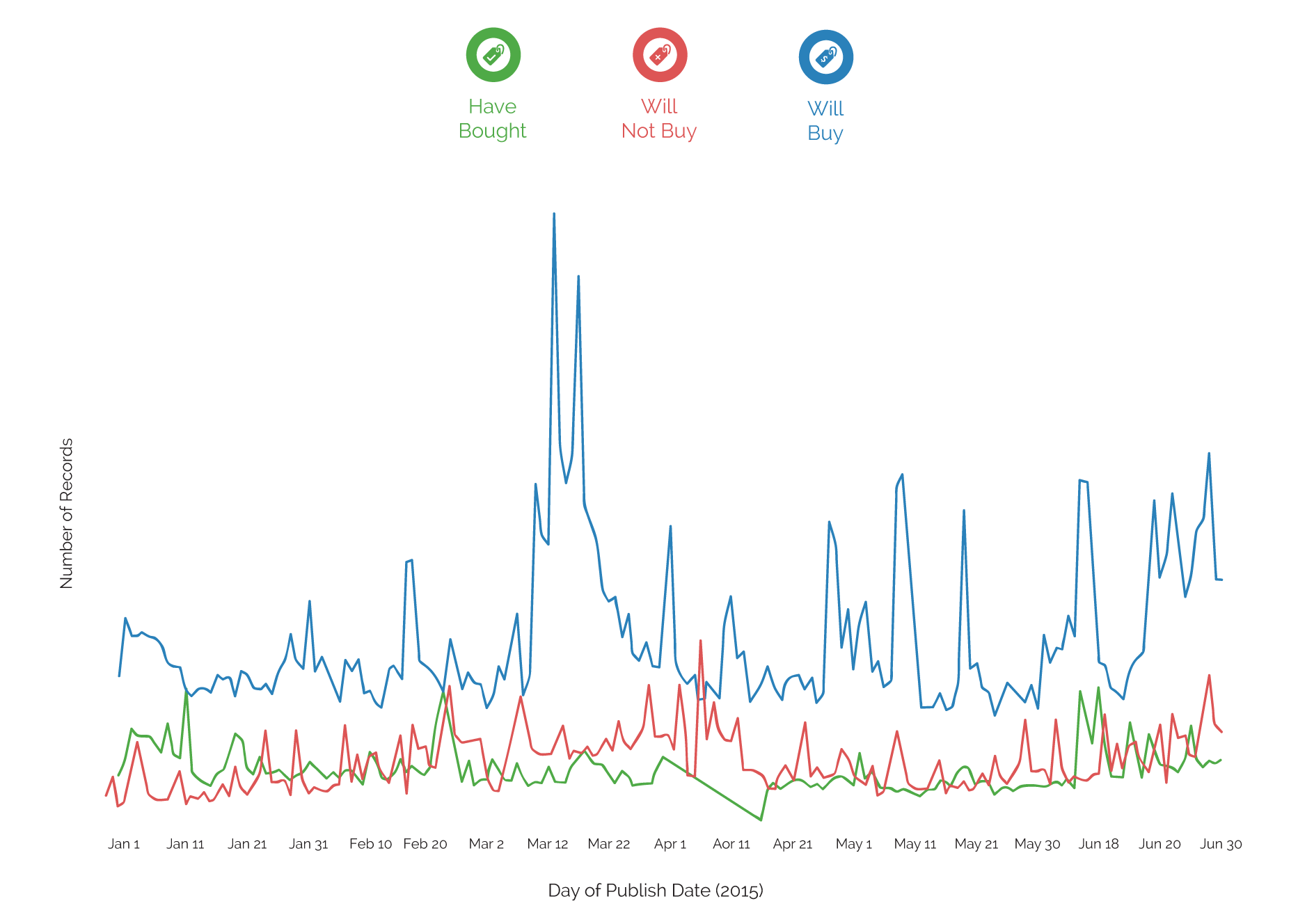Predicting Consumer Behaviour
Will customers purchase
my product in the future?
Measure consumer confidence, behaviour and socio-economics using social analytics. Obtain more actionable insights through our proven scientific-backed approach.
The more a consumer feels confident about the economy, the more he or she intends to make purchases.
Mazurek & Mielcová, 2017
Generally higher consumer confidence indicates economic growth reflecting higher consumption while lower consumer confidence indicates slowing economic growth in which consumers spending likely to be decreased.
Measure Consumer Confidence
Our extraordinary insights on socio economic behavior from social data brings better insights to your future strategies. Large organizations like the World Bank have embarked on social data to predict economic growth. Unlock the power of consumer confidence in your existing marketing strategies.

What is CCI?
Consumer Confidence Index (CCI) is a universally accepted indicator used by economists, institutions and independent bodies to measure the state of consumer confidence towards the economy. CCI is published every quarter based on a limited sample size of 2,000 data sets through random surveys.
What is CSI?
Consumer Sentiment Index (CSI) is an alternative economic indicator developed by Berkshire Media based on an amalgamation of sentiment analysis from various socio-economic topics (eg: Employment, Personal Finance, Consumer Purchasing, Price of Control Goods, etc). We use large-sample sized data to develop CSI.
4 Categories of CSI
The CSI is based on CCI’s assessment of four categories.
Purchasing Behaviour
- Things people will buy – Any posts related to what people plan to purchase (eg: going for movies / dinner / entertainment, buying groceries, planning a holiday trip, upgrading vehicles, new house application) and any form of expenses
- Things people have bought – Any posts related to the past; i.e items which they have bought recently;
- Things people will not buy – Any posts that exhibit any form of comments related to expensive items, pricing, (which includes complaints)
Jobs & Employment
- Employment – Posts related to new jobs offers, job offers received, salary revision, bonus, increment, new positions, career advancement
- Unemployment – Posts related to unemployment, difficulty in finding jobs, fresh graduates complaints on getting their first job, mutual separation and retrenchment, complaints on low wages, foreign labour, expatriates, etc
Consumer Price
- Consumer prices – Posts related to consumer prices based on basic (essential) goods, non-essential products, price complaints, price increase, discounts or promotions.
Personal Finance
- Savings Capacity – posts on the financial situation, current debt position, current and future savings, loans, payment defaults, hire-purchase, dividends or returns from financial institutions or investments.
- Savings Intention – posts related to saving intentions in any form of investments or financial instruments; i.e current or saving accounts, equities, bonds, mutual funds, etc.
Breakthrough Innovation Through Collaboration

We collaborate with universities and research centres to deliver the best in science and innovation. Our work in predicting consumer confidence is peer-reviewed and published in journals to validate our findings in the area of socio-economics. Understand consumer behaviour and trends from millions of social data
2,673,732
Social Data
4
categories
1095
days

Advancing knowledge through science
Access our peer-reviewed research papers on consumer sentiment using social media data.

Social Media Sentiment Analysis of Consumer Purchasing Behaviour vs. Consumer Confidence Index
-2017-

A Study on Correlations between Consumer Sentiments towards Consumer Price, Employment, Personal Finance and Purchasing Behaviour
-2017-

Large organizations are using social data to improve macroeconomics forecast. Here is what we know.
Find out the latest trends from the World Bank and European Central Bank .
Use Social Data to Predict Purchasing Behaviour
One of the four CSI categories is Purchasing Behaviour. Below is a sample of extracted data from various social media platforms. For more insights and research papers, kindly reach out to us.
490,033
Social Data
183,453
unique users
180
days

Monitor consumer behaviour and spending appetite.
The approach.
Need better insights?
As communications in the digital world are getting more complex with millions of conversation in social platforms, there are values to be unlocked when you begin with the right steps. We uncover more insights than your conventional tools or existing processes.
Drop us a note and we are more than happy to assist.
